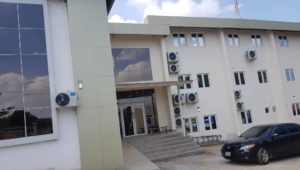The 90-90-90 target was to achieve three major HIV/AIDS target by 2020.
COVID-19 has been largely blamed for disrupting several global health targets including the HIV/AIDS goal set for 2020 by UNAIDS, a United Nations agency dedicated to tackling the virus.
But Nigeria, among several other countries, was not even on track to reach the target before the COVID-19 pandemic hit due to a mix of factors, such as the high prevalence of mother-to-child transmission and isolation of key populations such as sex workers and gay communities.
That is not to say Nigeria did not make progress towards reaching the target.
In 2014, the joint United Nations Programme on HIV/AIDS – UNAIDS – and other foreign partners launched the 90-90-90 strategy which is an ambitious target to help end the AIDS epidemic by 2030. The aim was to diagnose 90 per cent of all HIV positive persons, provide Antiretroviral Therapy (ARTs) for 90 per cent of those diagnosed, and achieve viral load suppression for 90 per cent of those treated by 2020.
Two years later, in April 2016, Nigerian authorities adopted ‘the testing and treatment policies’ in line with WHO latest treatment guidelines and subsequently the ‘UNAID 90-90-90 fast track initiative’ was launched by President Muhammadu Buhari to accelerate the plan to end the AIDS epidemic by 2030 in the nation.
As Nigeria joins the rest of the world to commemorate the World’s AIDS Day (WAD) on December 1, PREMIUM TIMES analyses some factors that have shaped HIV response in the country.
One key initiative that highlights Nigeria’s response to the HIV/AIDS epidemic was the Nigeria HIV/AIDS Indicator and Impact Survey (NAIIS). Conducted in March 2018 and released in 2019, the survey, which was the country’s largest, cost about $100 million, involved 185 survey teams, and covered more than 200,000 people.
Preliminary results indicated that there are 1.9 million people living with HIV (PLHIV) in the country — a 40 per cent reduction from the country’s official national HIV prevalence estimates for 2017.
“The result reflected the progress Nigeria has made in scaling up HIV treatment and prevention services in recent years. The end of AIDS as a public health threat by 2030 is truly in sight for our country,” President Muhammadu Buhari had said when the result was first released.
Health advocates also believe the new data will allow Nigeria to better target its HIV interventions in pursuit of the 90–90–90 goals.
This led to record gains; about 60 per cent of the people living with the virus in Nigeria are now on treatment, recent data from the World Health Organisation (WHO) shows.
While the 60 per cent is already showing a deficit of about 30 percentage points going by the 2020 target, Nigeria is off-track in other focus areas such as 90 per cent of the population knowing their status at the end of the deadline.
One major concern raised about the 2018 survey was that it did not give a focused coverage of key populations — those most at risk of HIV infection, including men who have sex with men, sex workers, and people who inject drugs.
According to Devex, NAIIS field workers said that although some members of key populations were likely covered by the survey, they were not specifically targeted.
Almost a quarter of gay men in the country have HIV but most cannot access treatment due to laws against same-sex relationships and rampant discrimination, the Devex report stated.
Nigeria still accounts for the second-largest HIV population after South Africa. This is because of some of the factors highlighted below, which includes COVID-19 but not restricted to it.
